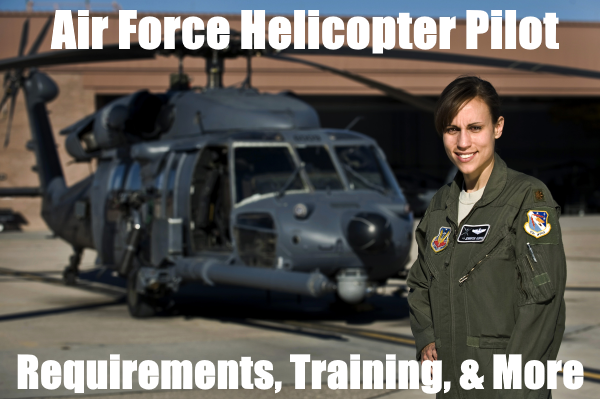So, you want to become an Air Force helicopter pilot?
There are few careers in the U.S. Air Force that are more rewarding and thrilling.
However, before you get too far, you’ll need to make sure you are eligible to become a helicopter pilot as well as review the training demands.
The requirements of the Air Force helicopter pilot program are competitive and rigorous.
Therefore, this article is designed to introduce recruits to the expectations of the program as well as other information necessary to apply.
Related Article – US Army Helicopter Pilot Requirements
Table of Contents
Air Force Helicopter Pilot
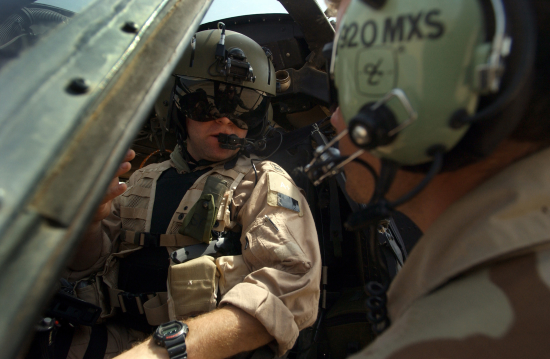
The United States Air Force (USAF) specializes in aviation, so there are few better places to learn to become a helicopter pilot.
Nevertheless, the Air Force helicopter pilot program is competitive and demanding.
Therefore, you’ll need an edge and advantage to stand out from other recruits.
So, understanding the expectations, requirements, and training will go a long way in ensuring your success.
Air Force pilots are officers, which means you must prove you have what it takes to achieve that rank.
For this reason, eligible recruits for the Air Force helicopter pilot program (more information, below) traditionally have a college degree.
Moreover, these recruits usually demonstrate advanced physical and mental fortitude.
Additionally, Air Force officers must be of high character, as you’ll need to pass a background check.
In general, candidates for Air Force helicopter pilot graduate from Officer Candidate School or the Air Force Academy.
Those that meet the standards of a USAF helicopter pilot are encouraged to apply for the training program.
7 Steps to Become an Air Force Helicopter Pilot
Helicopter pilots are one of the more desirable yet competitive careers in the Air Force.
For this reason, the Air Force receives a high volume of applicants each year for the training program.
Consequently, you’ll want to stay informed and make sure you are completing each step to become an Air Force helicopter pilot:
- Meet basic requirements of a USAF pilot.
- Attend college (including Air Force Academy) and earn a bachelor’s degree.
- Complete Air Force Officer Training School (OTS) or Air Force Reserve Officer Training Corps (AFROTC).*
- Complete Undergraduate Pilot Training (UPT).
- Attend Helicopter Pilot Training (Fort Rucker, Alabama).
- Receive wings, flight squadron, and first assignment.
While it may easily take 5-10 years to reach your goal, it’s worth the effort to become an Air Force pilot.
The opportunity is very rewarding, not to mention respectable.
After finishing the training program, expect a commitment to the Air Force for at least 10 years.
*NOTE: Graduates of Air Force Academy do not need to attend OTS.
Related Article – Commissioned Officer vs. Non-Commissioned Officer (NCO): 5 Major Differences
Air Force Helicopter Pilot Requirements
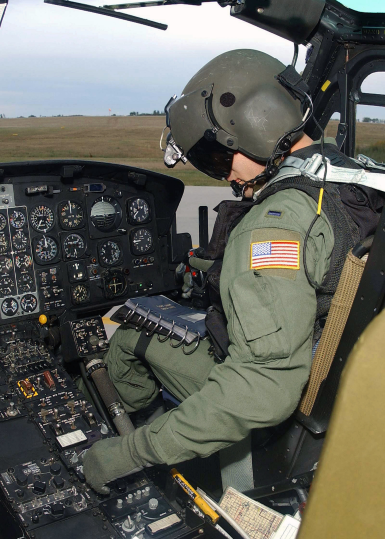
The requirements to become an Air Force helicopter pilot are demanding.
The U.S. Air Force establishes these expectations to verify they are grooming the most worthy candidates.
Therefore, you need to do whatever it takes to stand out in a crowded field of applicants.
Before you get too far, make sure you meet the basic requirements of the Air Force helicopter pilot training program:
Basic Requirements
First, the U.S. Air Force designates certain height and weight limits to become a helicopter pilot.
If you are particularly tall or larger, you may not qualify simply based on physical dimensions.
As a result, make sure you review the official guidelines of the Air Force regarding height and weight.
It’s important to mention that height specifications vary depending on the aircraft.
Therefore, if you have any doubts, do not hesitate to contact a military recruiter.
Secondly, the program is limited to candidates between the ages of 18-33 by the time they begin pilot training.
Unfortunately, the Air Force restricts individuals with the following conditions from becoming a helicopter pilot:
- Asthma
- Certain Allergies
- Hay Fever
- Poor Vision
- Color vision deficiency
Your vision, as one might expect, is really important regarding pilots.
Because of this, the United States Air Force places some fairly strict guidelines on acceptable vision.
As such, the minimum vision requirements for Air Force helicopter pilot are:
- Closeup Vision: 20/30 or better
- Distance Vision: 20/70 or better, correctable to 20/20
The eye test is conducted without glasses or contacts.
Recruits will notice the standards for seeing long distance are not nearly as high so long as vision is correctable to 20/20.
Notwithstanding, other conditions (like colorblindness) may prevent you from becoming a helicopter pilot even if you see 20/20.
Lastly, the Air Force has minimum physical fitness and strength standards that must be met.
Advanced Requirements
The minimum education to become an Air Force helicopter pilot is a bachelor’s degree.
In general, Air Force officers have obtained a bachelor’s degree or higher to achieve the rank.
Therefore, the expectations for Air Force helicopter pilots are no different.
Air Force helicopter pilot candidates are expected to display knowledge of the theory of flight and air navigation.
Furthermore, it’s crucial to learn about meteorology, flying directives, as well as aircraft operating procedures.
There are other advanced qualifications for the Air Force helicopter pilot program:
- Bachelor’s degree (or higher)
- Completion of Air Force Specialized Undergraduate Pilot Training
- Completion of a Single Scope Background Investigation (SSBI)
- Graduate of Officer Training School (OTS) / Air Force Academy / Air Force Reserve Officer Training Corps (AFROTC)
It’s worth mentioning that additional requirements may be stated upon acceptance into the helicopter pilot training program.
Also, recruits must perform well in the Air Force Officer Qualifying Test, in addition to graduating from officer school.
Background Check (SSBI Investigation)
The Department of Defense (DoD) performs an extensive background check on all aspiring pilots.
Consequently, you can expect a very thorough investigation that takes a couple of weeks to complete.
First, the DoD will confirm that you are a citizen of the United States.
Then, the department will verify that previous education and employer information is correct.
Moreover, they’ll examine where you all lived and any organizations you participated with in the past.
The background check involves interviews with former supervisors, associates, family, and friends.
For this reason, personal character and conduct also goes into the review of selecting eligible candidates.
Recruits will need to supply at several references for consideration.
Lastly, the DoD checks public records including any criminal or drug history.
Air Force Helicopter Pilot Training
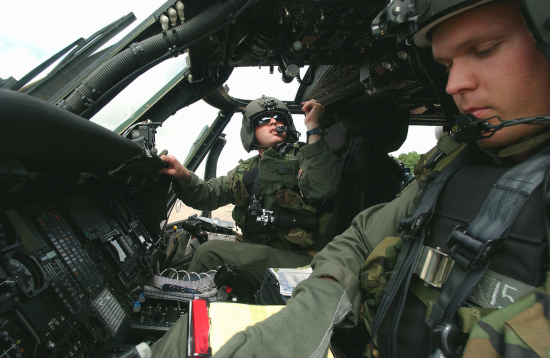
The next step is to understand the training process after you confirm that you are eligible to become a helicopter pilot.
For many, becoming an Air Force pilot is a goal that takes years of planning and hard work to accomplish.
So, if you have not already attended college and earned a bachelor’s degree, that’s your first step.
Once you have the adequate education, knowledge, and experience, the possibility of becoming a pilot will be far more feasible.
It’s not unusual for it to take 4-6 years to become an Air Force helicopter pilot depending on how long it takes to get a degree.
Next, Air Force Officer Training School (OTS) lasts 9.5 weeks.
The alternative is to apply and receive admittance into the U.S. Air Force Academy (AFA).
Both avenues are the only methods to become an Air Force officer outside completing the Air Force Reserve Officer Training Corps (AFROTC) in college.
Regardless of your path, all aspiring Air Force helicopter pilots will end up training at Fort Rucker, Alabama.
Primary Flying Training
The U.S. Air Force divides helicopter pilot training into 2 segments: Primary Flying Training and Advanced Training.
You’ll discover that only a portion of your training will take place in an actual aircraft.
Instead, a lot of training includes classroom learning and flight simulations.
Nevertheless, you’ll eventually have some time to fly a helicopter.
First, however, you’ll want to focus on the basic flying fundamentals taught during primary flying training.
Ground training also includes practicing flying exercises on simulators and computers.
Meanwhile, the officer-development portion of the training will strengthen your skills as a leader.
Those that pass the first portion of Air Force helicopter pilot training advance to the second phase:
Advanced Helicopter Pilot Training
The Air Force separates advanced training into 3 different learning tracks:
- Airlift and Tanker Pilots
- Bomber and Fighter Pilots
- Helicopter Pilots
As a result, aspiring helicopter pilots are grouped together and separated from other types of USAF pilots.
Advanced training is the perfect opportunity to gain real-world experience and learn from outstanding educators.
Pilots will begin to train on the type of helicopter they plan on flying while serving the country.
Accordingly, one pilot may train with a C-130H Hercules out of Maxwell AFB while another is at nearby Fort Rucker, testing a TH-1H helicopter.
Near the competition of Undergraduate Pilot Training (UPT), candidates will be assigned aircraft, otherwise known as “getting your seat assignment”.
The seat assignment is determined by several factors:
- Class Ranking
- Pilot Preferences
- Training Performance Reports
- Instructor Recommends
- Fulfillment of Air Force
After completing UPT, pilot trainees spend 6 months to 1 year learning the aircraft.
The goal is by the end of training the pilot will be a specialist and have several hours of experience in the skies.
Finally, toward the end of advanced training, pilots are assigned a squadron as well as a location for first duty.
Depending on your performance during training, your assignment preferences may or may not be considered.
Air Force Helicopter Pilot FAQs
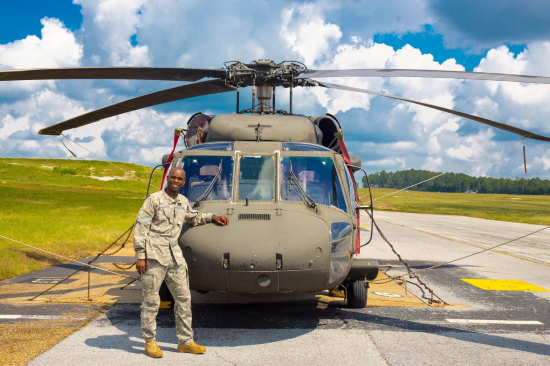
Do you want to become a pilot in the U.S. Air Force?
Here are some frequently asked questions about becoming a helicopter pilot:
What vision do you need to become an Air Force helicopter pilot?
Pilots need to have good vision to operate aircraft.
As such, the Air Force conducts an eye test that inspects both close and long-distance vision.
The standards for close vision (20/30 or better) are higher than long-distance vision (so long as it’s correctable to 20/20).
However, there are certain conditions (such as color blindness) that may prevent you from becoming a pilot.
There are a few examples where having corrective eye surgery disqualified an applicant from training school.
Is there a height requirement?
Yes, the Air Force has height restrictions for pilots.
And, the acceptable height varies depending on the aircraft. You’ll want to check with current guidelines for helicopter operators.
Moreover, have a few different types of helicopters in mind that you would like to fly to review the differences.
Can I get a waiver?
Becoming an Air Force helicopter pilot features strict physical, mental, medical, and academic requirements.
Even more, there are physical requirements such as height and age that may disqualify certain individuals.
Accordingly, those that are significantly tall or short (or larger) may require special screening.
The purpose of the screening is to verify you can still perform operational duties safely.
How long is the service commitment?
The service commitment for an Air Force pilot is longer than other career paths.
For starters, it takes years to even become a pilot before your active-duty service even begins.
Consequently, most service commitments are far longer than the typical 4-year enlistment.
Rather, Air Force pilots are expected to serve 10 years from the date they complete training and receive an aeronautical rating.
In general, airmen are evaluated for continued service 12-18 months prior to the conclusion of the first service contract.
Conclusion
Have you ever dreamed about flying?
If so, you are not alone.
Becoming a pilot is easily one of the coolest career paths you can pursue in the military.
Be that as it may, acceptance into the Air Force helicopter pilot training program is competitive.
Training to become a pilot is time exhaustive, not to mention expensive.
However, receiving your training through the Air Force is one affordable and highly respected option.
Air Force helicopter pilots are extremely coveted and operate some of the most advanced aircraft in the world.
The career paths range from Helicopter Pilot to Remotely Piloted Aircraft (RPA) Pilots to Air Battle Managers.
Helicopter pilots utilize their extraordinary skill and precision to help the military complete a variety of missions.
It takes determination and persistence to join the Air Force as a helicopter pilot.
Nevertheless, if you believe you have what it takes, then what is preventing you from applying?
- Ikon Pass Military Discount: Learn How To Save Big - January 31, 2025
- RTIC Military Discount: Find Out How To Save Big on Gear - January 30, 2025
- Traeger Military Discount: Learn How To Save Big on Smokers - January 28, 2025

